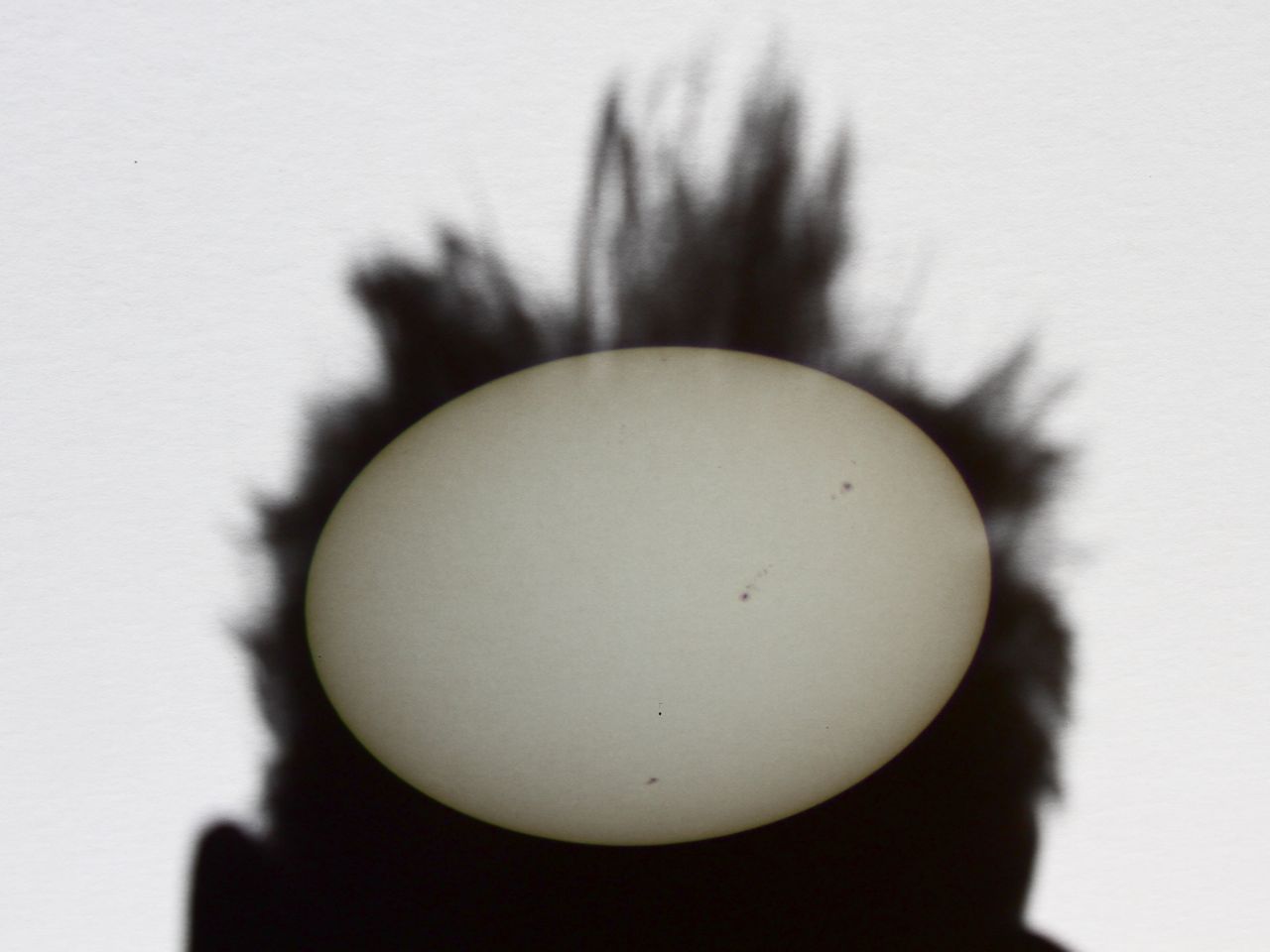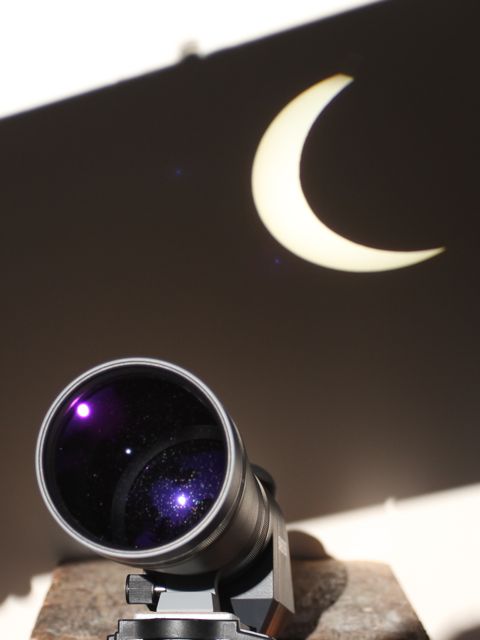
I’m in Los Angeles at the moment, which means I got a half decent view of this evening’s annular solar eclipse.
The sun didn’t show as a true annulus from where I am, but an off-set 85% coverage is pretty spectacular all the same. The sun’s image is projected with a 100mm spotting scope, and I took pictures with my standard camera.
With projection, you need something to shade the image from the direct light of the sun, and failing anything better at hand, I find my head does the job – complete with muzzed up solar flare haircut for the occasion!
Note, this is all about projecting the sun’s image. Remember: NEVER LOOK DIRECTLY AT THE SUN THROUGH A TELESCOPE.
The eclipse started at 17:24 PST and reached maximum at 18:38 PST. I caught the maximum but gave up shortly after because of trees getting into the shot.
Working backwards from maximum eclipse, this is at 18:39.
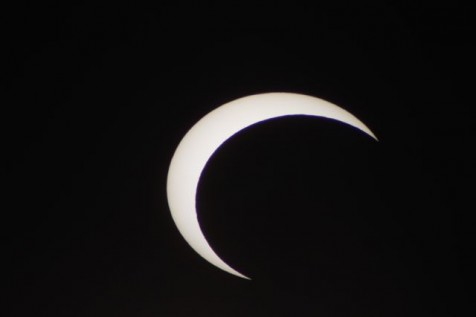
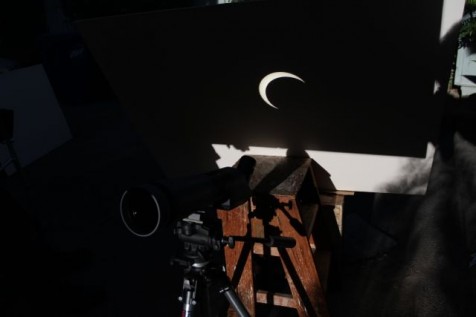
Few sunspots visible again near maximum eclipse:
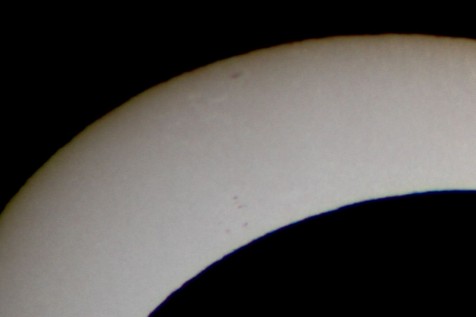
About half an hour before maximum…
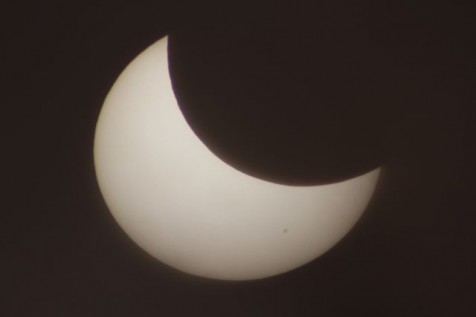
Sunspots come out very well in projection. There’s some distortion of the shape of the sun/moon by this method, because the camera is always a bit off-centre, but I reckon the detail is pretty good.
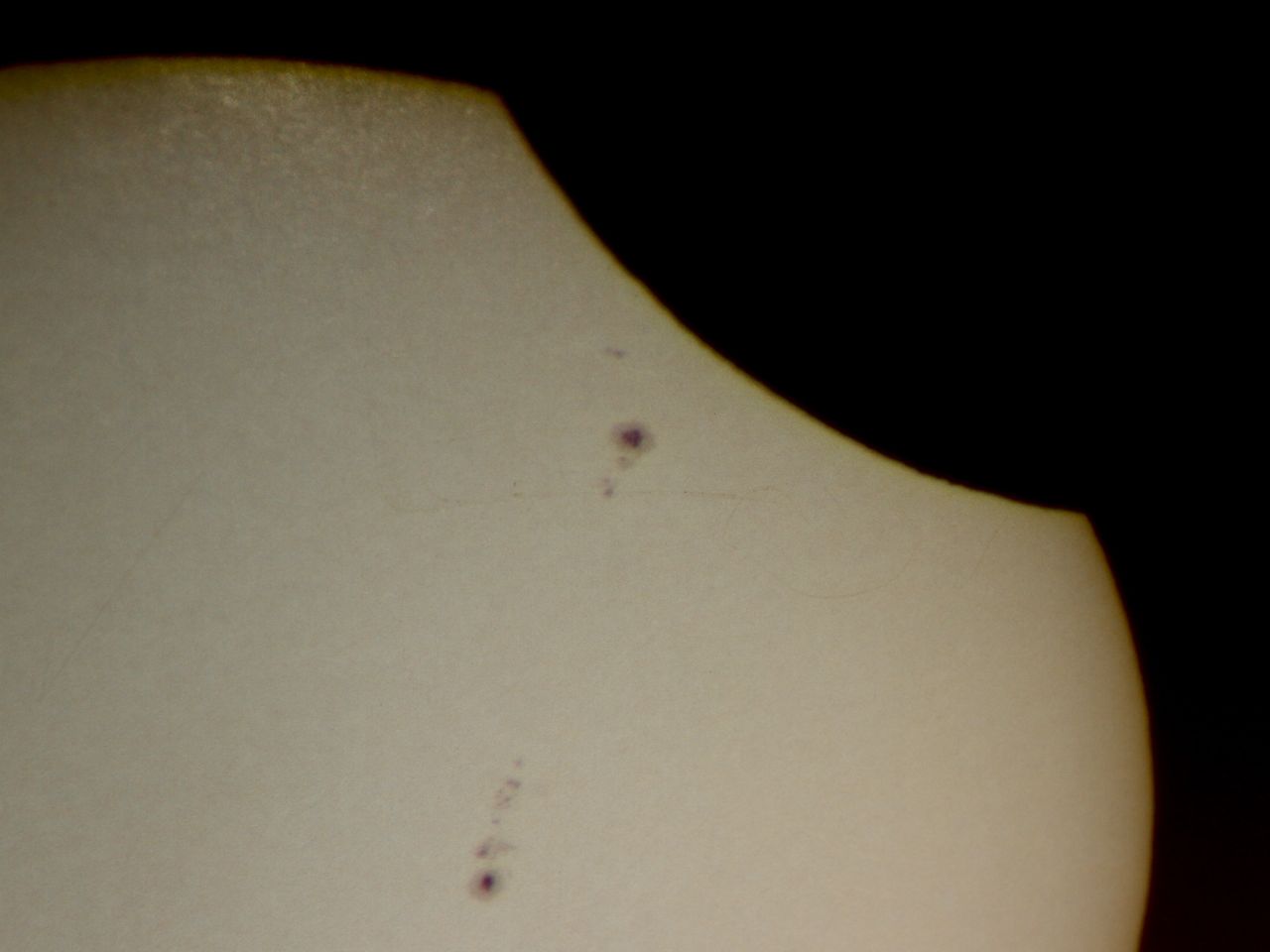
Well on it’s way….
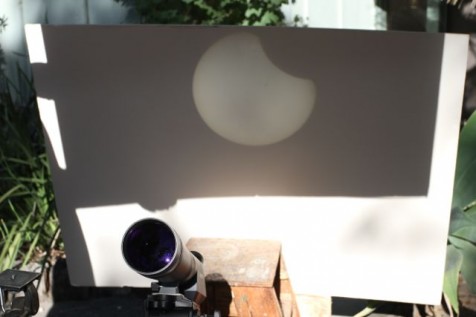
The first nick out of the side of the sun at 17:27
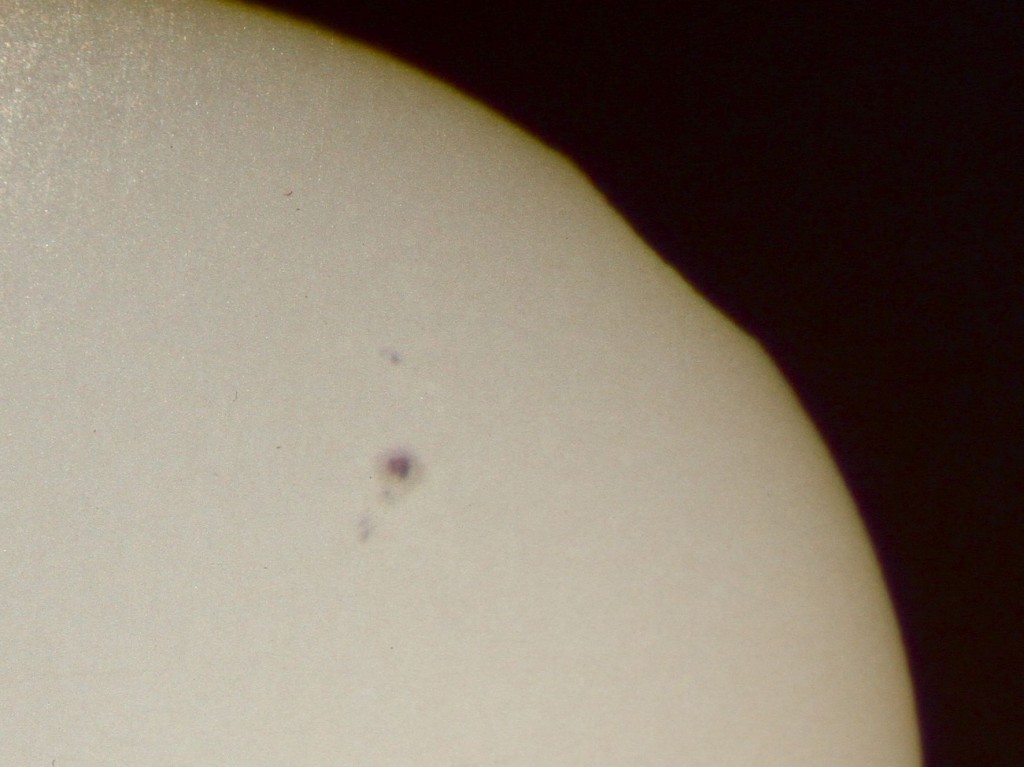
Craters on the moon? For sure there are craters on the moon. But can you see them in profile during an eclipse? The air tends to ‘boil’ the image so much that it’s hard to separate out random optical effects from real lunar geography. These two shots were taken a few seconds apart, so features appearing on both are likely to be real.
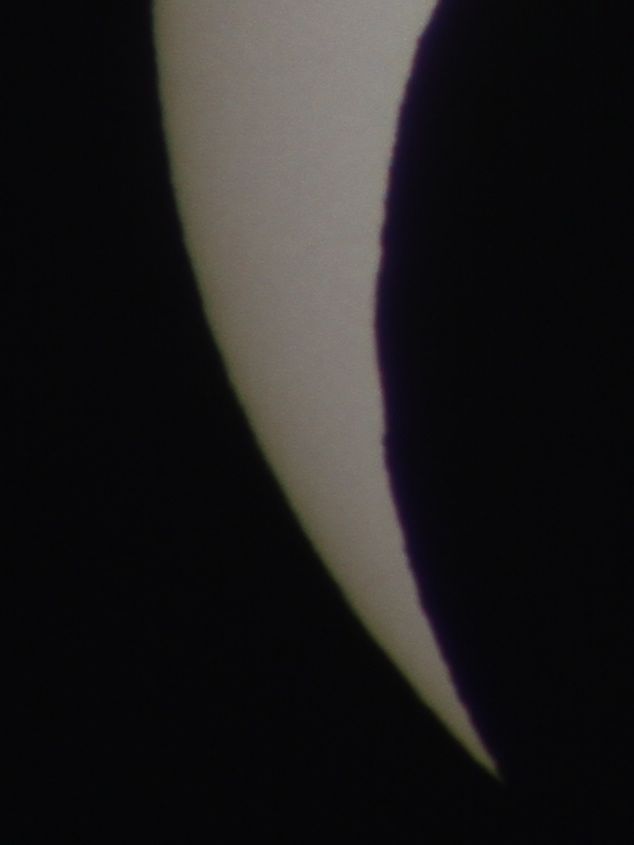
Same as above but a few seconds later:
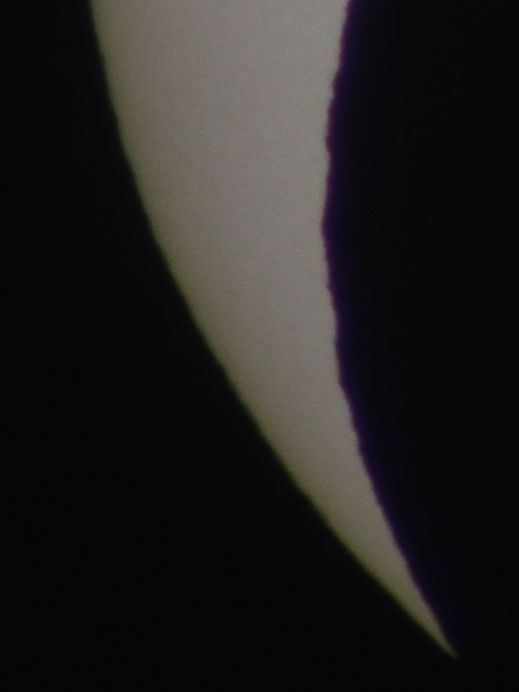
I think there is a bit of a dip about a third of a way up the limb, but it’s not clear cut. To do this properly, we’d need to take a bunch of photographs and electronically combine them to get an average profile over a few seconds or minutes. Some dedicated soul out there will have done it.
See also my post on the 4th Jan 2011 partial solar eclipse HERE
